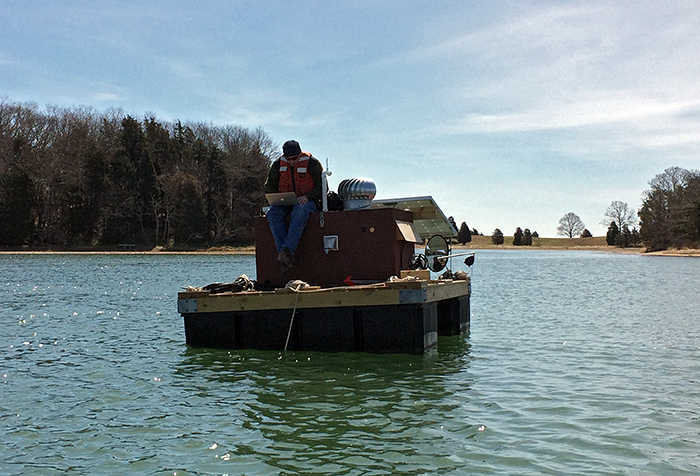Biological and Physical Controls of Alexandrium Bloom Initiation and Termination
We are using the Nauset marsh system as a model to interrogate the various factors that drive red tide events.
An important question in the study of harmful algal blooms (HABs) is what causes them to begin and end? While HABs are becoming increasingly prevalent, the particulars that cause these blooms to occur and then diminish are not well understood. This project looks at this question by examining the biological and physical controls that determine Alexandrium bloom initiation and termination.
Utilizing the Nauset Marsh system as a “natural laboratory,” researchers will study localized algal blooms in an area representative of many similar shallow estuaries and embayments in temperate waters throughout the U.S. and the world. Using the novel sampling system, the Imaging FlowCytobot, researchers will be able to discern the life cycle stages of the algae at a cellular level. Furthermore, this project will develop and utilize molecular markers for algal gametes and planozygotes to better track the processes affecting bloom reproduction. Understanding the reproductive life cycle, along with the effects on algal blooms from grazing, parasitism, and physical advection will illuminate the mechanisms by which HABs are initiated and decline, making the blooms more predictable to scientists.

Monitoring instrumentation at Salt Pond
Funding Agencies
This project is part of the Woods Hole Center for Oceans and Human Health, sponsored by the National Science Foundation and the National Institutes of Health.
Partners/Collaborators
This is a joint project with David Ralston (WHOI), Robert Olson (WHOI), and Jefferson Turner (UMass).
Research Papers
-
- Physical Drivers of a Massive Harmful Algal Bloom in the Northern Bering and Chukchi Seas in Summer 2022
- Coastal phytoplankton blooms expand and intensify in the 21st century
- Tracking a large-scale and highly toxic Arctic algal bloom: Rapid detection and risk communication
- Temperature and residence time controls on an estuarine harmful algal bloom: Modeling hydrodynamics and Alexandrium fundyense in Nauset estuary